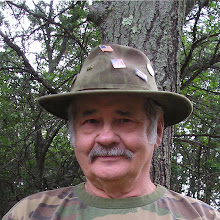Now let us take an entirely different look at things. Let us look at it from my viewpoint, from the viewpoint of a creationist. God created all of the animals at one time, meaning that they were all on earth at the same time. He also created man while all of these animals were on the earth. When the flood came, Noah was told to build an ark and gather all of the animals into the ark. There is a good possibility that God, at that time, decided not only to rid the earth of virtually all of mankind but to eliminate some of the animals at the same time. Noah had to rely on God to send the animals that were to be saved to him. If God chose not to send the dinosaurs or any other animal to Noah, they did not get saved. I believe this is why human bones and dinosaur bones have been found in the same layers of ancient earth. The evolutionists cannot explain that to us so they just ignore the fact that it has happened. Either way, whether you are and evolutionist or a creationist, mankind did not cause the extinction of any species at that time. If that is true, why do we get the blame for the extinction of species? The earth is ever changing whether it was created by God or evolved. The ever changing of the earth is what is causing the extinction of species.
There are a couple of examples of how mankind has interfered with the natural progression of things. First, there is (or was) the passenger pigeon. When Europeans first came to America, there were literally millions of these birds. They soon became the prime target of market hunters. I did not take too many years (in the life of the planet) before these birds became completely extinct. What had looked like a never ending supply of birds was gone.
Now let us take a look at the American Bison. When Europeans arrived in America, there were, like the passenger pigeon, millions of these animals. They roamed over the western half of the country in great herds. Probably, when the American Indians arrived the bison was already here too. I have no way of know for sure, but there were probably less at that time than when the Europeans came. When the Europeans came there were herds of bison even east of the Mississippi. How large would these herds have grown had it not been for man's interference? Would the herds have continued to grow, spreading ever eastward, even to the Atlantic coast? These are large beasts and it takes a lot of food to keep them going. How long would it have been before they consumed all available food in the country? When that happens, starvation sets in along with diseases that the weak bodies of the animals can no longer overcome. Would a scenario like that have caused the bison to become extinct? I have no way of knowing, but the possibility exists. As it was, Mankind became the reason for the near extinction of this great animal. The American Indian had hunted the bison for many years. They used the meat for food, the hides for clothing and shelter and most other parts of the animal for various other things. They hunted the bison with bow and with spear an sometimes by running an entire herd over the edge of a cliff. Now come the settlers with guns and able to0 kill many more bison that the average American Indian ever thought of. Add to this that they were also providing the American Indian with guns and you can see where it is going. Many more people, armed with better weapons and the bison did not stand a chance. My biggest problem with the killing off of the bison is the amount of waste. Many (if not most) of the bison killed at this time were killed strictly for their hides. Most of the meat was left to rot. This, to me, is unconscionable.
Until next time:
